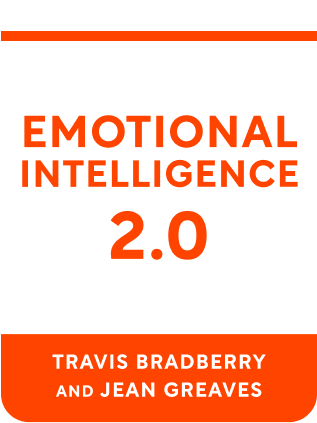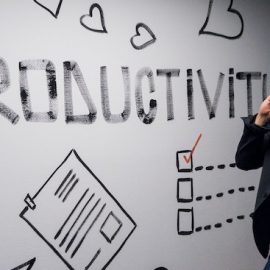

This article is an excerpt from the Shortform book guide to "Emotional Intelligence 2.0" by Travis Bradberry and Jean Greaves. Shortform has the world's best summaries and analyses of books you should be reading.
Like this article? Sign up for a free trial here .
What is social emotional awareness? Is it a personality trait or a trainable skill that can be developed through practice?
Social emotional awareness refers to the ability to identify, interpret, and empathize with emotions of other people. It is one of the four components of the emotional intelligence (EQ) construct.
Keep reading for more about social emotional awareness.
What Is Social Emotional Awareness?
Social awareness is the ability to identify emotions in other people and understand the reasons behind them.
People with high levels of social emotional awareness:
- Give others the opportunity to speak
- Actively listen
- They stop what they’re doing and turn their full attention to the other person
- Pick up on cues that reveal emotion
- For example, if someone’s hand is shaking as they speak to you, they may be nervous or angry.
- Take in important information without bias
- Adapt to the emotional climate
- Develop empathy for the people around them
Why You Need It
| When Social Emotional Awareness is Present | When Social Emotional Awareness is Absent | |
| Empathy | You put yourself into the shoes of other people and try to understand their perspective. | You get stuck in your own opinion as you refuse to see other perspectives. |
| Adaptation | You adapt to your environment, adjusting the way in which you interact to yield a productive result. | You don’t change the way you interact with people, even if your approach isn’t working. |
| Team-Building | People want to work with you as you respect their perspective and try to find solutions to please all parties involved. | People don’t want to work with you as you don’t acknowledge their perspective and only discuss solutions that benefit you. |
Tactics to Develop Social Emotional Awareness
Tactic #1: Listen attentively. Listening isn’t just about hearing words. Tone, volume, and pacing signal subtext and emotion (for instance, if a person speaks quickly and quietly, they may be intimidated).
Stay completely focused on the conversation at hand. Half-focused listening prevents you from picking up important information and makes the other person feel disrespected. Use conversation as an opportunity to grow and improve your social emotional awareness, not to show off with your intellect. To more effectively listen:
- Put everything else on hold for a moment.
- Stop yourself from preparing responses in your head.
- Don’t let your mind drift onto other topics.
- Avoid interrupting the person you’re talking to.
- Focus your attention towards the body language and words of the other person.
Tactic #2: Learn and use people’s names. People feel wanted and cared for when you use their name instead of a generic title (such as “buddy,” “you,” or “sir”). Though it may seem like a minor gesture, using a person’s name shows respect and appreciation. This creates a deeper connection between you and the person you’re speaking with. Tips to remember names more effectively:
- Make it a habit to greet people using their name every time you see them.
- Ask the person how to spell their name. Visualizing their name spelled out may help you remember it, especially if it’s unusual.
Tactic #3: Ask others how they perceive you. You have a biased opinion of yourself. Everyone does. Understanding the way you come across to other people is key to developing your social emotional awareness. To get a clearer picture of how others perceive you, ask others to describe you and your behaviors. This will help you adjust your communication to more accurately reflect your intentions.
For instance, if people think that you’re standoffish at work, you may get passed on for projects that have to do with developing relationships. Though the reality may be that you’re just trying to keep your discussions professional, the perception of your coworkers determines how they interact with you and the opportunities that they’ll give you. If you know you come across as standoffish, you can soften the way you speak or make an effort to interact with your coworkers to eliminate the misconception that you don’t want to be around people.
Tactic #4: Practice empathy. Looking at a situation from someone else’s point of view helps you understand their behaviors gives you the tools to more effectively interact with that person, and identifies issues before they develop. When trying to step into someone else’s shoes:
- Think of how they’ve responded to specific situations in the past
- Consider their past experiences and background
- Observe how they behave in different environments
Tactic #5: Observe body language. Body language provides subtextual information that can reveal a person’s emotional state. This helps you make more informed decisions when interacting with them. Key body language indicators include:
- Eyes: What are the person’s eyes doing? When someone maintains eye contact, they’re usually being sincere. When they constantly blink or avert their gaze, they’re often uncomfortable or lying. When their eyes seem calm but attentive, they’re probably comfortable talking to you.
- Smile: Is the person’s smile authentic? When a person is genuinely smiling, the corners of their eyes typically crinkle and their entire face reflects their inner excitement. If the smile seems isolated to the mouth, they’re likely forcing a grin.
- Body: Do you notice any unusual tension in the person’s body? If it seems like their shoulders are raised or their hands are constantly fidgeting, there’s a good chance they’re stressed or distraught.
Tactic #6: Observe emotional cues in films. Actors develop realistic characters by evoking emotion. Because they usually portray characters in extreme situations, the emotional cues they send are often much clearer than they are in real life. You can practice social emotional awareness by watching movies and pointing out emotional cues that stand out to you. Try to connect certain behaviors to the emotion being portrayed on screen and rewatch impactful sections to pick up on specific cues. Because you’re not directly involved with the drama, you will have a much easier time staying objective and observant.
Tactic #7: Go “people watching”. Observing people going through their daily lives is another great way to improve your social emotional awareness. It will help you begin to notice patterns of behavior that correlate to internal emotions.
For instance, you see a couple walking down the street holding hands. Despite this apparent gesture of affection, you notice that they’re avoiding eye contact at all costs. You use this observation to conclude that they don’t want to interact with one another but don’t want to show it in public.
The next day, you go into the office and notice Tom standing by the water cooler. As you talk to him, he smiles, but refuses to look you in the eyes or otherwise connect with you—a similar behavior to that of the couple you saw the other day. Thanks to your observations from “people watching,” you have a deeper insight into the emotional state of your coworker and can make the appropriate choices to effectively navigate the conversation.
Tactic #8: Confirm your observations. Sometimes, you can’t read a situation based solely on your observations. In these cases, ask for confirmation. State your observation, then ask if what you’ve noticed is accurate. When you confirm your observations, you gain crucial knowledge that allows you to better understand and navigate your surroundings.
For example, you notice that Mary has not been talking as frequently as she usually does. She seems down, but whenever she interacts with you or other people, she puts on a smile and acts like everything’s fine. Finally, you pull her aside and say, “Hey. You’ve seemed a bit depressed lately. Did something happen?” She opens up a bit and thanks you for your concern.
In another instance, Josh says something to you right as you’re about to walk into a meeting. It sounded like he was trying to drop a hint, but you didn’t quite understand what he was trying to say. You pull him aside and say, “It sounded like you were trying to hint at something. Is there something I should know?” He tells you that your boss plans to reprimand one of your co-workers in the meeting, and that you should be aware, so you’re not caught off-guard.
Tactic #9: Live in the moment. Though reflecting on the past and planning for the future are both necessary exercises, allowing them to dictate your day-to-day behavior keeps you in your head and prevents you from observing and interacting with your surroundings. Keep your head clear by staying focused on the present moment in front of you. If you’re at work, then be at work. If you’re with your family, then be with your family. If you find yourself drifting mentally, try to snap yourself back to your current reality. This will help you make more effective connections and deepen interactions with those around you.
Tactic #10: Make sure the time is right. If you make requests or observations at the wrong time, the person you’re speaking with will likely not respond well. To ensure proper timing, keep the emotional state of the person you’re talking to in mind. If they’re clearly angry or distraught, frame your question in a way that will not further upset them or find a better time to approach them with your issues.
For instance, you’ve been meaning to ask for a raise for a few months. You’ve decided today is the day to make your request. You walk into your boss’s office. She invites you in and apologizes for her demeanor as she just found out her dog died. While she tells you about what happened, you shift the conversation and ask for that raise. Taken aback, she tells you that the two of you can talk about that another time when she’s in a better headspace, then tells you to go back to work. You don’t end up getting that raise.
Tactic #11: Read the room. Once you’ve mastered reading the emotions of individuals, you can read the mood of entire rooms. Understanding the collective mood of the people around you allows you to give your input in an appropriate and well-timed manner. There are two ways to read the room:
- Trust your gut. Every room you walk into has a different energy. For example, the energy in a waiting room at a doctor’s office will have a different feel than that of a rope line outside of a music venue. These energies are contagious and will impact you. Use this impact to indicate the emotional state of the group.
- Follow a guide. For rooms that you’re not familiar with, find someone you trust who has experience with the situation. Follow and observe them, and compare your observations with theirs. Soon, you’ll begin picking up on things that they point out and will have a better understanding of your surroundings.
Tactic #12: Have a “back-pocket question.” When a conversation doesn’t go as planned, it helps to have a question to reestablish connection with the person you’re speaking to. This question may have nothing to do with the topic at hand, but it puts energy back into a dying conversation as it diverts briefly from an uncomfortable topic to a relatable one.
For example, you need information from a coworker about his current project, but he’s only responding with one-word answers. You know he’s an avid sports fan, so you pull out your “back-pocket question” and ask him what he thought about your local team’s performance in the game this past weekend. He immediately lights up and starts to share his opinion on the game. Once you’ve had a brief discussion, you come back to the initial conversation. More comfortable and energized, he gives you the information that you need.
Tactic #13: Make a plan for social gatherings. Preparing for events alleviates stress and allows you to stay present. This reserves your mental energy for in-the-moment interactions and observations. Different ways to plan for an event include:
- Making a list of attendees
- Developing talking points to keep conversation going
- Reminding yourself of anything you need to bring with you
- Setting goals that you want to accomplish at the event

———End of Preview———
Like what you just read? Read the rest of the world's best book summary and analysis of Travis Bradberry and Jean Greaves's "Emotional Intelligence 2.0" at Shortform .
Here's what you'll find in our full Emotional Intelligence 2.0 summary :
- What emotional intelligence is and why it's essential for your workplace success
- The 4 reasons you need to work on your EQ
- How you can use EQ to better manage relationships






